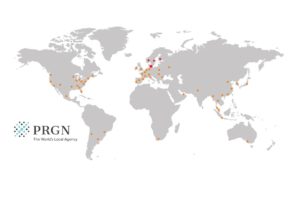
By Judy Kuramata, Executive Director of Integrate Communications
Today’s media landscape is becoming increasingly dominated and disrupted by digital. It’s everywhere you turn. On the way to work, while eating breakfast and even when we’re with friends, we are constantly absorbing digital media and the endless amount of information technology provides.
Blogging is a highly-effective content marketing tool; it is no longer a “back stage” room to hold your content. It’s a space for you to have complete ownership over your brand’s story and the way it’s told. There are thousands of ways to target potential customers through blogging. Specifically, you sell context, not products. It’s great if your blog leads to a direct purchase, but more often, a blog’s purpose is to draw potential customers to your website.
So, who does your blog attract? Potential customers may not immediately contact you to purchase your products or services after they’ve read your blog, but search engines and keywords will, at least, draw them to your website.
Offer readers something valuable for free, using relevant keyword phrases they are searching for, and they may turn into a customer down the line.
Plus, when you provide thoughtful, free content, you might end up with completely new customers that you did not foresee. For example, an entrepreneur might be searching in Google for some quick tips on how to market her business online, and stumble upon a blog post written by your PR agency. She’s so impressed by the tips provided that she now wants to hire your agency to help her sell her product. She wasn’t originally looking into agencies, but because your blog provided valuable content, she was successfully converted into a customer.
A mixture of valuable context, consistent messages, effective keywords and timing are very important when getting started on your blog.
Now that you have valuable content, do make sure you have some way of monitoring and measuring your blog’s success. Your blog posts should be shared on your website, as well as your social media platforms. Track how much traffic the post brings to your website, how many ‘likes’ or ‘shares’ you receive on social media and how many inquiries come in.
Blogging requires strategy and implementation planning just as any other traditional marketing method does. By developing a target audience, creating the right content, being consistent and tracking, blogging can be a highly effective marketing tool for your business.
Integrate Communications is our partner agency in Japan. Article originally published at PRGN.com



